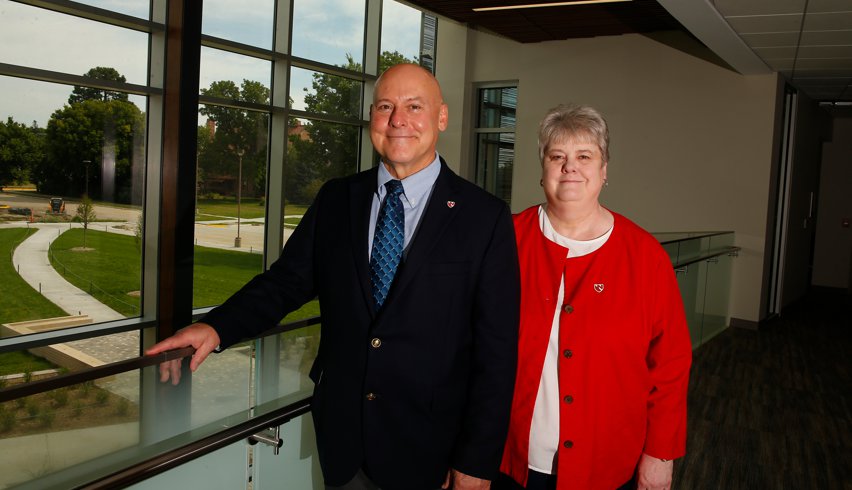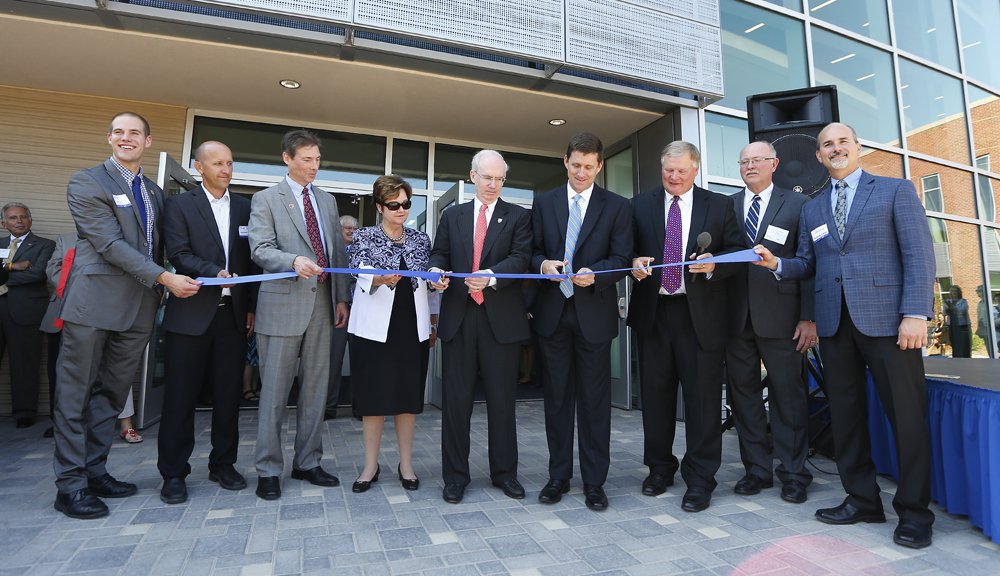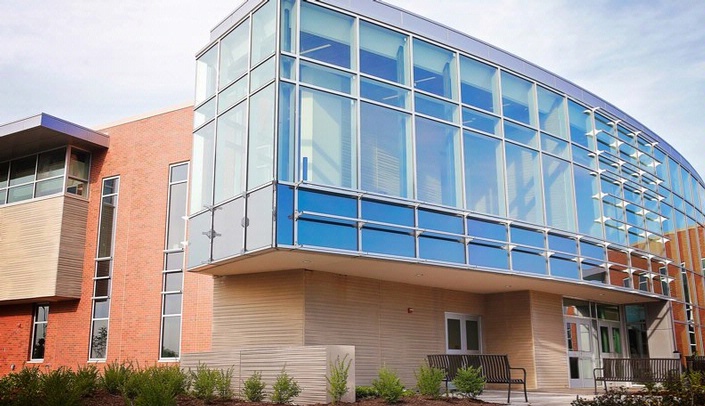A new era for educating health professionals in Nebraska has begun on the University of Nebraska at Kearney campus.
The UNMC Health Science Education Complex (HSEC) recently opened to provide a world-class environment for students in the UNMC colleges of nursing and allied health professions.
The College of Nursing Kearney Division, which has provided quality nursing programs there for 20 years, has expanded its degree offerings. The new College of Allied Health Professions now offers seven allied health professions programs that are unique to the area. When all the programs are fully implemented, an enrollment of roughly 300 students a year is expected.
Students from both colleges learn in the new $19 million, 46,000-square foot building that features next-generation technologies, simulation, experiential and hands-on learning. An array of classroom and clinical opportunities exposes them to an environment that promotes team-based care that provides optimal health care for patients and their families and reduces errors.
The programs in Kearney are led by Mary Ann Mertz, Ed.D., interim assistant dean of the College of Nursing Kearney division, and Greg Karst, Ph.D., assistant dean for academic affairs in the College of Allied Health Professions.

Greg Karst, Ph.D., assistant dean for academic affairs in the College of Allied Health Professions, and Mary Ann Mertz, Ed.D., interim assistant dean of the College of Nursing Kearney Division, lead the programs in the new complex in Kearney.
"With this facility, we finally have the physical space and the technology to support more learner-centered, activity based teaching," Dr. Mertz said.
Dr. Karst said he is excited about the state-of-the-art gross anatomy lab; an "energized lab," or fully-functional digital X-ray suite for training radiography students; a digital, virtual anatomy table; simulation suites that provide audio and video of students' performances for later review; and digital X-ray images showing how the procedure would have turned out.
"Students get risk-free, realistic training without tying up clinical facilities or worrying about making a mistake on a real patient," Dr. Karst said. "By the time they get to their clinical rotations, students will have more confidence because they've perfected their skills and experienced situations similar to what will be encountered in the real world."
UNMC administrators liken the new technology to flight simulators used by would-be airline pilots.
The HSEC also will have the technology to conduct "synchronous distance education." Some classes taught at UNMC's Omaha campus will be experienced simultaneously in Kearney through video link-up. Some Kearney-originated programming also will be experienced in Omaha, Columbus, Norfolk and Scottsbluff.
Through "collaboration software," students can view the instructor's presentation on a monitor at their table, or share presentations. "It's an amazing and collaborative learning experience," Dr. Mertz said.
The HSEC was built to address critical health care workforce shortages and provide educational opportunities to students interested in rural health and primary care without having to relocate to eastern Nebraska. From the beginning, it's been a model of collaboration – a partnership across the University of Nebraska system, state and community.
Web Extras
Watch a slide show of the ribbon cutting event.
Read the Kearney Hub supplement on the health complex

From left, UNMC Student Senate President Andrew Shaw; Matt Schendt, Hausmann Construction; Kyle Meyer, Ph.D., dean of the UNMC College of Allied Health Professions; Juliann Sebastian, Ph.D., dean of the UNMC College of Nursing; UNMC Chancellor Jeffrey P. Gold, M.D.; University of Nebraska President Hank Bounds, Ph.D.; UNK Chancellor Douglas Kristensen, J.D.; Charlie Bicak, Ph.D., UNK senior vice chancellor of academic and student affairs; and Joe Lang, RDG Planning and Design

Radiography students Kaylee Samway of McCook, left, and Emily Buck of Holdrege work on the Anatomage table with Ryan Splittgerber, Ph.D., assistant professor and anatomist/director of the gross anatomy lab. The Anatomage table is a life-size 3D interactive touch screen that allows students to visualize bones, muscles, organs and soft tissue by providing images that can be customized by virtually slicing, layering and segmenting the anatomy.
